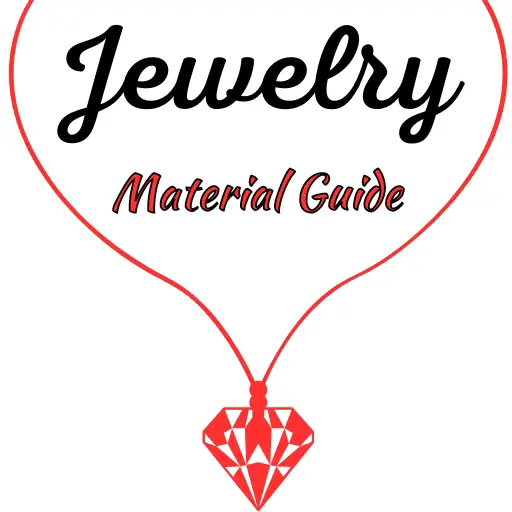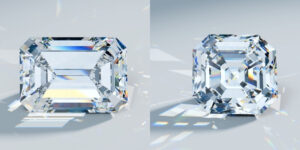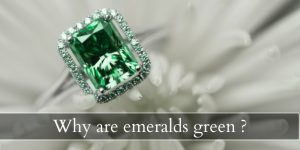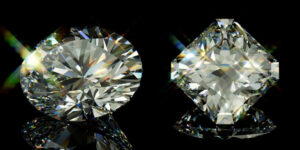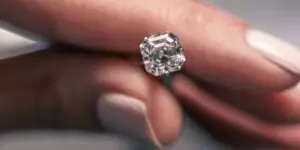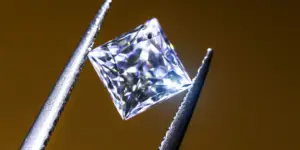In the world of gemstones you can always come across some very wild gems, and quite a few of them may turn everything you know upside down. This was the case when demantoid garnet was first discovered, earning its ‘demantoid’ name for its similarity for a diamond’s brilliance, which is not found in garnets.
So just what is demantoid garnet ? What makes it so different from any other garnet ? Is it rare ? Is it expensive ? Why isn’t it better known ? Let’s take a look.
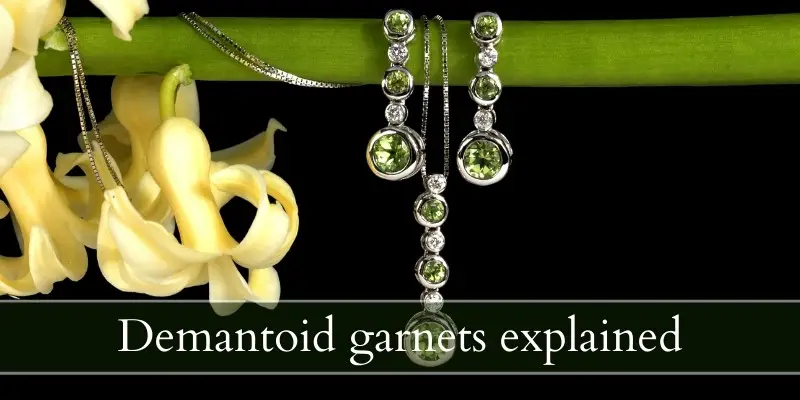
What is demantoid garnet ?
Demantoid garnet is a variety of andradite garnet, colored green by trace amounts of chromium and ferric iron. This type of garnet is quite rare and shows a very unique set of inclusions in most specimens.
This garnet’s ‘demantoid’ name comes from its similarity to an actual diamond. Demantoid garnet has exceptionally high brilliance and fire for a garnet, very close to that of a diamond. It also has an adamantine luster, very similar to a diamond.
When looking for demantoid garnets you must remember that these gems used to be called Ural emerald or Siberian emerald due to most of them coming from Russia in the mid 1800s, and their resemblance to an emerald’s color.
Another misleading name is chrysolite, which was a brown umbrella for gemstones that have a green-yellow color. Demantoid garnets are distinct from actual chrysolites and emeralds.
Is demantoid garnet rare ?
Demantoid garnets are quite rare, as they’re a very special kind of garnet that does not occur as often as regular green garnets. The few demantoid garnets that are available on the market are highly expensive and are turning into more of a collector’s item.
For a very lone time demantoid garnets were mined exclusively in Russia, hence the Russian or Ural emerald names. This was all the way into the late 1900s. That is when a deposit was found in Namibia, and when other countries found deposits as well. Currently you can find demantoid garnet from Russia, Namibia, Iran, Pakistan, Canada, Italy, and Madagascar. Even so, Russia is still the biggest producer.
Read also: Iolite VS Tanzanite
Can you wear demantoid garnet every day ?
Demantoid garnet scores a 6.5-7 on the Mohs hardness scale, which means it’s relatively tough but may still accumulate scratches in time. If you want to wear your demantoid garnet every day, we suggest setting it in a pair of earrings or a pendant, this way it will be safe from most accidents.
Rings and bracelets with demantoid garnets may scratch much faster and their high luster will make this noticeable. Demantoid garnets are not trouble getting into water, but you should still take off your jewelry before entering any sort of water.
Is demantoid garnet expensive ?
Demantoid garnet is very expensive for a garnet, and the lager the gem the more expensive it gets. Demantoid garnets sell for an average of $3,500 per carat for a minimally included gemstone with a vivid color. Larger gems (over 1 carat) may sell for a bit more due to their rarity.
The inclusions present in a demantoid garnet are actually sought-after, so their presence does not drive the price down. This goes back to when demantoid garnets were exclusively from Russian mines, and were a trademark of a genuine demantoid garnet.
Read also: What Gemstones Are Green ?
What is the best cut for a demantoid garnet ?
The best cut for a demantoid garnet is a brilliant cut of any kind, to emphasize this gemstone’s brilliance and fire. A step-cut is wasted on this gem because it can easily reflect a lot of light beck into your eyes, and the many inclusions present in this gem don’t work well with high-clarity cuts like emerald or baguette.
How do you identify a demantoid garnet ?
A demantoid garnet may be easy to confuse with a tsavorite or peridot at first glance, but there are a few key differences. Or rather, there are few key features of a demantoid garnet that make it immediately recognizable, so let’s explore them.
Demantoid garnet is a golden green color
The first striking feature of a demantoid garnet is its color. Most green garnets are a bright apple green, while demantoid garnets bridge the gap between brown garnets and green ones. Demantoid garnets are green with hints of yellow, or have some serious golden undertones when closer to the brown end of the spectrum.
A good comparison would be peridot, as it’s very close in color to a demantoid garnet. Olive-green but ore vibrant. African source demantoid garnet tends to show the golden hues the most, due to the higher amounts of iron in the earth. Russian demantoid garnet tends to be pure green due to no iron competing with the chromium.
Demantoid garnets have an adamantine luster, like diamonds
All gemstones have a bit of luster to them, which is a combination of their opacity and their high shine (or lack thereof). Garnets aren’t terribly shiny, but demantoid garnets have an adamantine luster just like diamonds. This means the gem has a high refractive index to allow the light in and out at great angles, and exceptionally high clarity. Demantoid garnets do have such a lustre, along with zircon ( not CZ !), and diamonds.
Demantoids usually show a very specific inclusion pattern
Not all demantoid garnets are included, but most of them are, to the point where for a very long time these inclusions were used as their signature. Well, it turns out these unique inclusions are actually a trademark of all andradite garnets, which include demantoid garnets.
But these inclusions are very common in demantoid garnets and you can use them as a factor, as long as you pair them with another from this list. The inclusions are called horsetail hairs, because they resemble a horsetail fluttering. So they look like long, very thin, slightly curved inclusions going in (mostly) one direction within the gem.
These inclusions are actually a form of asbestos, and appear golden in color.
Demantoid garnets are almost always under 1 carat
These garnet types are usually on the smaller end. You wont easily find demantoid garnets over 1 carat in faceted form, because they don’t usually grow into very large crystals.
So any larger gemstones you may find will usually have an extra-high price tag due to their rarity.

I’m the main author for jewelrymaterialguide.com. I started this site after we did tons of research before our wedding and noticed that there is information about rings, jewelry, and so on that is really hard to find on the internet.
